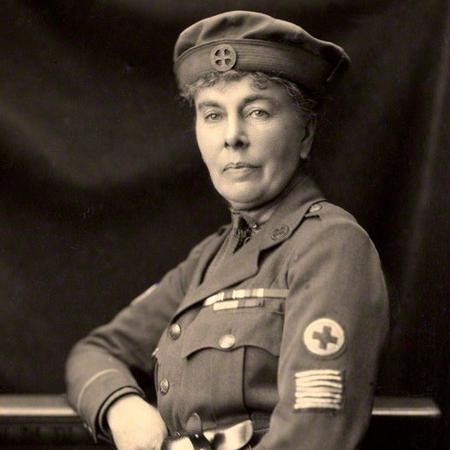

By Linda Batchelor
This photograph of Constance Lady Baird shows her during her distinguished career as a nurse during World War 1.
After the war, in pursuit of her love of sailing, she competed as part of the winning team in the International Six Metre Yacht Race for the British-American Cup in 1921 and she was the winner of the 1924 Spanish La Copa del Rey where she was the only female competitor.
At the time she became known as one of the most famous female yacht racers in the world.
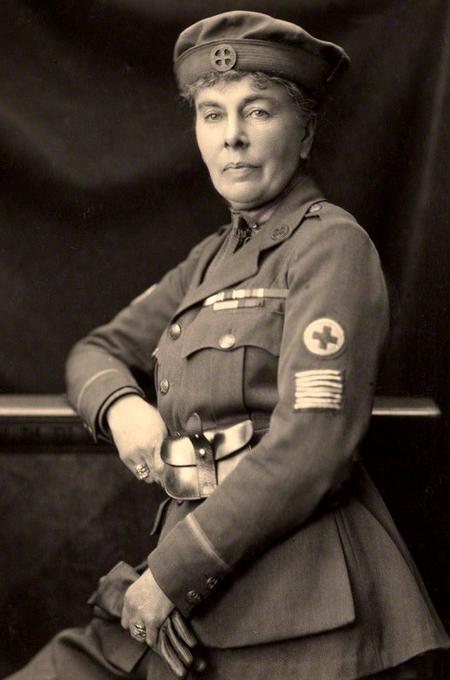
Constance, Lady Baird in First Aid Nursing Yeomanry (FANY) uniform in World War 1 Imperial War Museum
Constance was born Constance Barbara Clarke in 1866, the daughter of Edward Clarke, a solicitor in Chard, Somerset, and his wife Barbara. The family home was Avishays House at Chaffcombe, close to Chard. Built in the 17th century it was owned by the Sealy and Marwood families until sold to Edward Clarke in 1859. It was here that Constance grew up with her parents and her two brothers Edward and Walrond. She was educated in Paris and as she grew older she travelled extensively. On the death of her parents she went to live with her aunt at Fremington House near Barnstable, Devon and remained connected with the area for the rest of her life.
In 1905 Constance married Sir John Kennedy Erskine Baird KCB becoming Lady Baird. Prior to this she had worked as a probationer at St Bartholomew’s Hospital in London. Sir John had a long career in the Royal Navy and had retired as a Rear Admiral in 1897 to live in Wootton on the Isle of Wight. Sir John had been born in 1832 the son of Sir David Baird and Lady Anne Kennedy, the eldest daughter of the first Marquess of Ailsa, and had entered the navy in 1845. He was noted as ‘a smart officer with his ships a fine state of discipline’ (The Times Obituary) and served as naval aide de camp to Queen Victoria. He was an enthusiastic yachtsman and a member of the Royal Yacht Squadron at Cowes. He was the owner of Woodside House at Wootton and he and Constance were both actively involved with local society and with the sailing community.
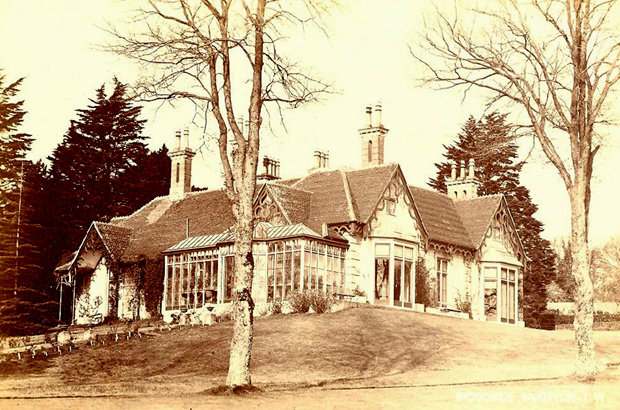
Woodside House, Wootton, Isle of Wight home of Sir John and Lady Baird
Wootton Bridge Historical
Constance was widowed in 1908 on the death of Sir John but she remained involved in her community interests in the Isle of Wight and continued to pursue her love of sailing which she had shared with her husband. Unlike him she was unable to join the Royal Yacht Squadron as there was a ‘gentleman only’ rule for membership. It was not until 1960 that women candidates were admitted as Associate Members and it was 2015 before they could be Full Members. Nevertheless, despite restrictions Constance remained closely involved with the sailing community as a yachtswoman in both competition and in yacht ownership. In a newspaper article it was recorded that at Cowes Regatta Week Constance was usually ‘…afloat, however heavy the weather.’
Whilst living in the Isle of Wight Constance became President of the Cowes Branch of the British Red Cross Society. At the beginning of the war she approached Edwin Granville Ward owner of Norwood House on the Isle of Wight asking for his consent to use the house as a hospital for wounded soldiers. Within two months the eighty-eight bed hospital was receiving patients from the fighting in France.
Early in the war, with her Red Cross connections and her previous nursing experience Constance joined the First Aid Nursing Yeomanry Corps (FANY). Originally founded in 1907 by Edward Baker, the Corps trained young women to ride and deliver first aid on the battlefield. By 1911 the Corps was led by Grace Ashley-Smith with Lilian Franklin as its first commanding officer. When war broke out in 1914 the British government was reluctant to involve the Corps in war work but the Belgium government readily accepted the offer of help from the Corps. The first group of volunteers crossed to Calais in October 1914 to drive ambulances for the Belgians and French. As the war progressed the corps were driving ambulances, setting up mobile canteens and rest facilities for the troops and providing nursing, auxiliary hospital and convalescent care for the wounded.
Constance initially joined a group of five women yeomanry volunteers who set up a canteen and provided nursing facilities. She served throughout the war in Belgium and France as a nurse, first as a trooper and then as a serjeant in the First Aid Nursing Yeomanry Corps under the auspices of the Belgian Red Cross. At the end of the war she received five decorations for her work including two of Belgium’s highest awards, the Medaille de la Reine Elisabeth and the Croix de la Couronne. She was awarded the latter, previously a male preserve, for saving the life of a Belgian soldier by pulling him out of a trench. At the time of her death in 1931 it was reported that until then she was the first and only woman to have been granted this honour. Her name was also included in the Roll of Honourable Service for the Red Cross Society.
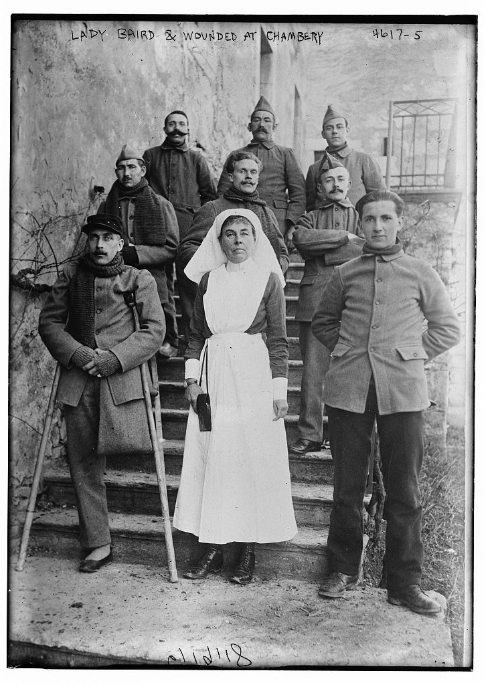
Constance in 1918 with wounded Belgian soldiers at Chambery Hopital Militaire Belge
Bain Collection, Library of Congress
After the war Constance returned to civilian life. From the 1920s she owned Fremington House near Barnstable in Devon and was engaged in many philanthropic enterprises in the area but maintained her association with the yachting fraternity in the Isle of Wight. She resumed her interests to the full as a yacht owner and competitor becoming closely involved in the Six Metre Class of yacht racing.
Six Metre yachts first appeared in 1907 and quickly became one of the most popular of the classes. It is probable that Constance’s interest in this class arose at this time. Many of the yachts were built by William Fife & Sons of Fairlie in Scotland with other British builders such as Alfred Mylne of the Bute Ship Dock Co. and Camper & Nicholson. In the 1920s Constance owned the Six Metre yacht Thistle built by Fife in 1923.
Keen to re-establish international yacht racing after the Great War, in 1920 a group of British and American yachtsmen came together and proposed a new competition for Six Metre boats. Brokered by the American yachtsman Paul Hammond and the Royal London Yacht Club an agreement was reached to start a new international team racing competition between Britain and the United States. The competition was also backed in Britain by other yacht clubs including the Royal Yacht Squadron, the Royal Thames, the Royal Victoria, the Royal Albert and later the Royal Northern and the Royal Clyde. In the United States the prestigious Seawanhaka Corinthian Yacht Club donated the trophy for the new competition to be known as the British-American Cup.
The opening series began in 1921 and was to consist of four matches in consecutive years until 1924. The first of this series was to be held in Ryde and Cowes alternated with Oyster Bay in the US in the subsequent years. In these early days of the competition each team consisted of four yachts although after the first series this was increased to six.
The competition rules stipulated that crews should have only one professional yachtsman as skipper and that crews should be maximum of four sailors plus there could be an extra ‘lady’ but who would not count as part of the crew. When one of the American skippers asked the organising committee to define the term ‘lady’ this rule was abandoned so that there could be a maximum of five crew whether male or female.
The first teams all consisted of yachts built in 1921. The British team was made up of Flya and Polly both Fife builds, Victoria built by Mylne and Jean by Camper & Nicholson. Fresia another Fife build was selected as reserve. The American contestants were the first Six Metre boats built in the United States and were Sheila and Jeanie, built by Starling Burgess, and Montauk and Grebe by William Gardner. All four boats arrived in Britain as deck cargo on the SS Francesca. The first races in 1921 resulted in a win for Britain by 117 points to 88 points. The next year the win went to America but the two subsequent years went to Britain and as they had two consecutive match victories the trophy went permanently to Britain. The competition continued to be held with some alterations to numbers of boats and scoring systems until 1955.
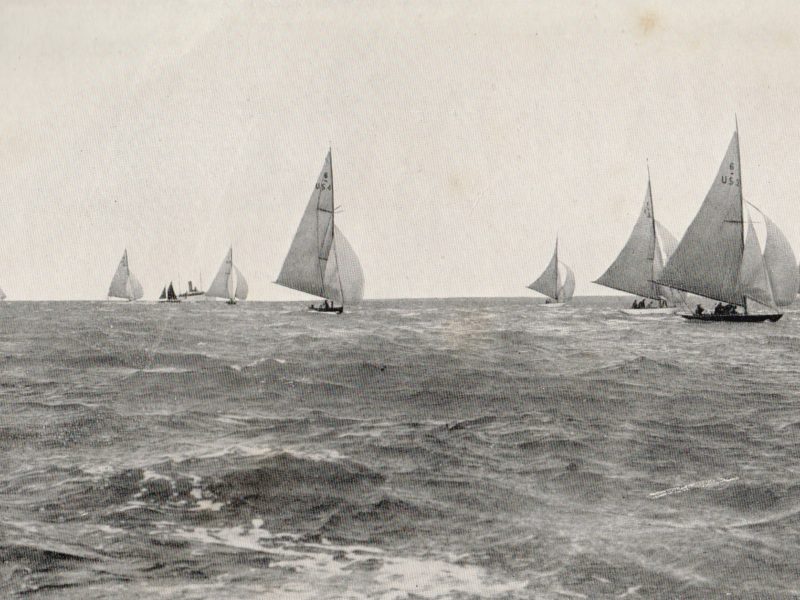
The British- American Cup off the Isle of Wight 1921
Photograph from ‘At The Tiller’ Iain W Rutherford 1946
Constance was fully involved in this first series of the British- American Cup and continued her enthusiasm for Six Metre racing in ensuing years. Her Obituary in the New York Times in 1931 made the point that ‘usually she sailed her own boats’.
In 1923 she bought and sailed the Six Metre Thistle with Mr Granville Keele and Mr Joseph Hannon. Thistle was built by William Fife in 1923 and that year Lady Baird had an extremely successful racing season in several competitions. These included the Castle Yacht Club Regatta at Leigh on Solent in July, and in September she was racing in the Plymouth Royal Regatta and at the Royal Cornwall Yacht Club in Falmouth. She donated a silver model of a Six Metre yacht as a trophy to the overall winner of the Falmouth races which was won by Betsy.
The following year Thistle was in the United States as part of the team for the British- American Cup. Constance travelled to New York on the Cunard Line’s Acquitania and she was on board Thistle in Oyster Bay, Long Island for the 1924 British- American Cup races.
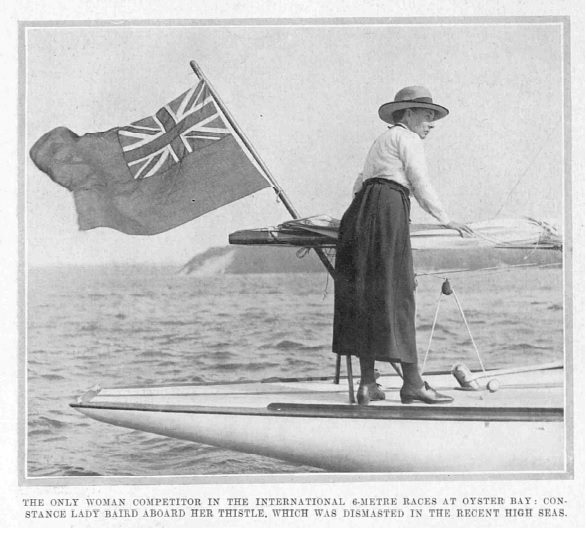
Constance on Thistle during the 1924 British-American Cup races
She donated the Lady Baird trophy for a competition open to all American Six Metre boats, not restricted to those only on the United States team. In 1925 she won the King of Spain’s Cup in which she was the sole British representative and the only woman competitor.
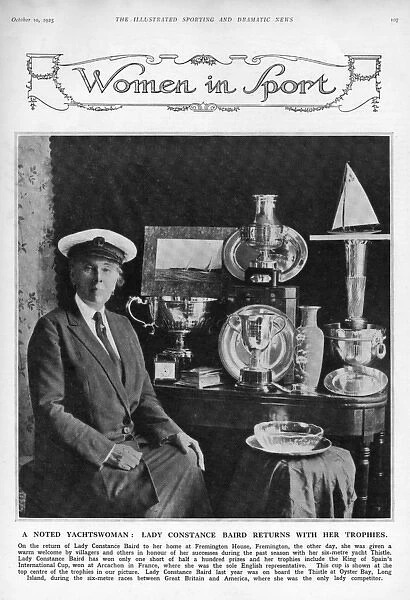
Lady Constance Baird with her trophies gained with her Six Metre yacht Thistle
The Illustrated Sporting and Dramatic News October 1925
In 1925 she married again becoming Lady Kennedy. Her husband, Sir Charles Kennedy, later the fifth Marquess of Ailsa, was a relative of Sir John Baird and was from a Scottish family of keen sailors and yacht owners some of which were built by William Fife. Her engagement announcement described her as a ‘racing yachtswomen’ and ‘an extraordinary personality of her time’.
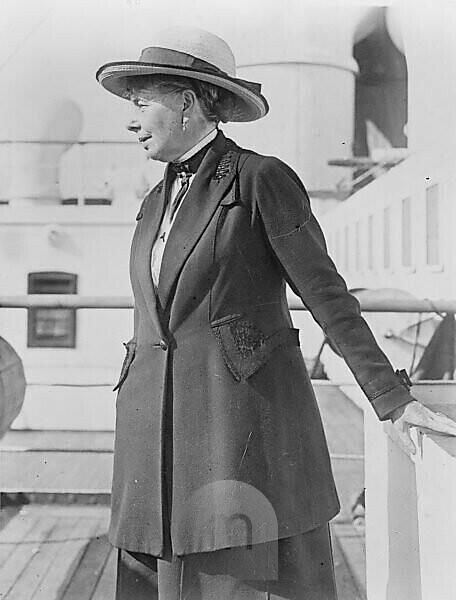
Lady Constance on her engagement to Lord Charles Kennedy December 1924.
This remarkable woman had the courage, conviction and determination to succeed in all she did. She was ‘an energetic worker in social movements’ and ‘a generous supporter of charitable and philanthropic institutions.’ (The Times Obituary November 4 1931) She served with distinction during the Great War and defied gender convention to become a noted yachtswoman. She continued to do so until her sudden death in 1931 in Ontario, Canada and she opened the way in the years to come for women in the sailing world.
The Bartlett Blog is written and produced by the volunteers who staff The Bartlett Maritime Research Centre and Library of National Maritime Museum Cornwall. This blog post was written by Linda Batchelor, a Bartlett Library volunteer.
The Bartlett Maritime Research Centre & Library holds a Collection of over 20,000 volumes and offers access to one of the finest collections of maritime reference books, periodicals and archival material. The Bartlett Blog reflects the diversity of material available in The Bartlett Library.

National Maritime
Museum Cornwall Trust
Discovery Quay
Falmouth Cornwall
TR11 3QY
View Map
See our opening hours
Tel: +44(0)1326 313388
Email: enquiries@nmmc.co.uk